Sarah Rothberg
The artist talks about using avatars to highlight the power dynamics and performative aspects of everyday technologies.
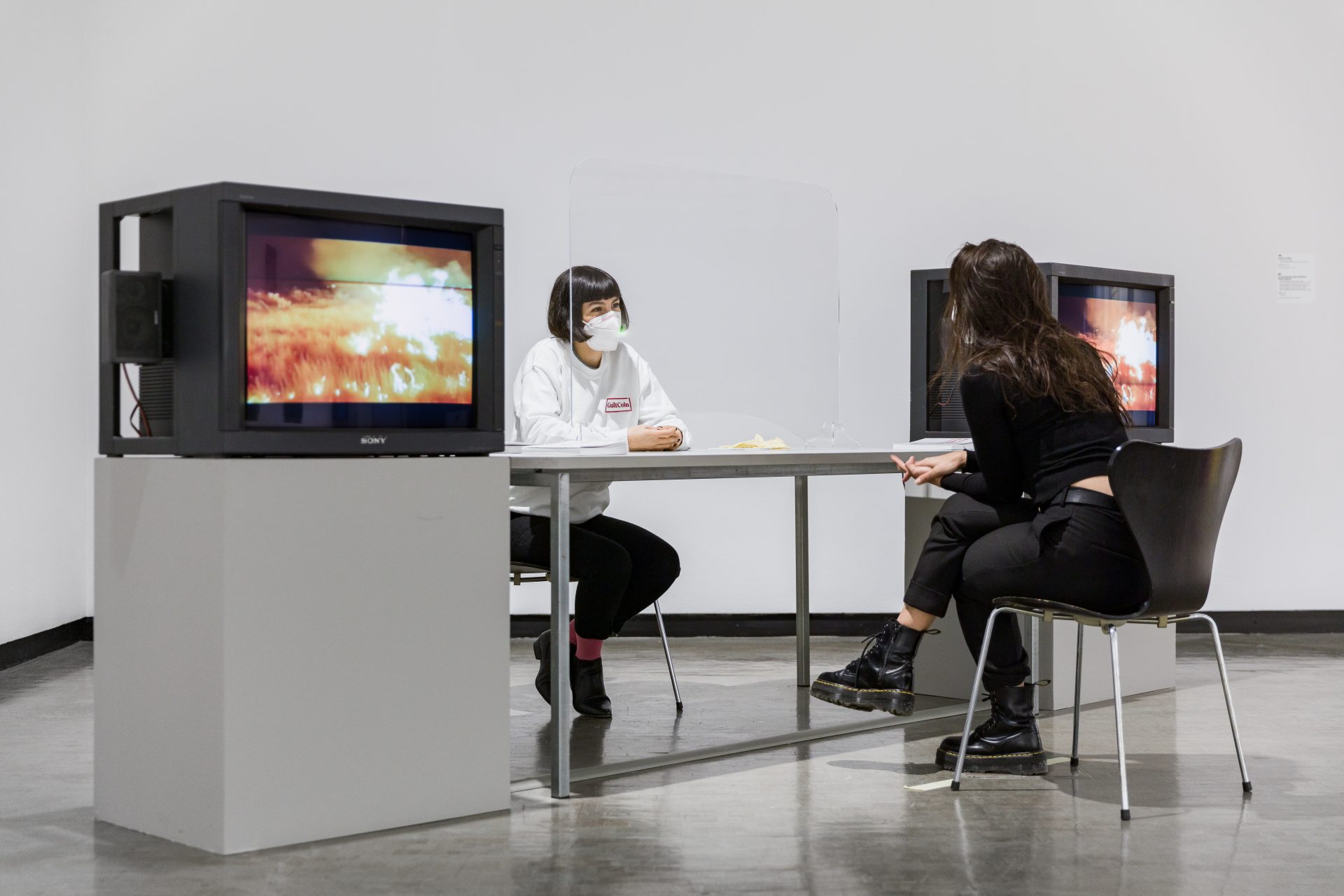
How has the possibility of independence from fiat currency and financial institutions changed the way we conceptualize investments, debt, and markets? How can new modes of exchange inform artmaking and activism? Devin Kenny’s What Would Upski Think? (2018) is a computing rig installed in art spaces that runs Bail Bloc–a program that mines the cryptocurrency Monero, converts it to dollars, and donates the proceeds to bail funds; the software was developed by the collective Dark Inquiry, of which Kenny is a member. Coleman Collins’s GuiltCoin (2021) proposes using an ERC-20 token as “streamlined mechanism for efficient guilt reduction.” The two artists met to discuss feedback loops between technology and culture, the role that debt and guilt play on individual and collective scales, and how institutional contexts inform the experience of their work.
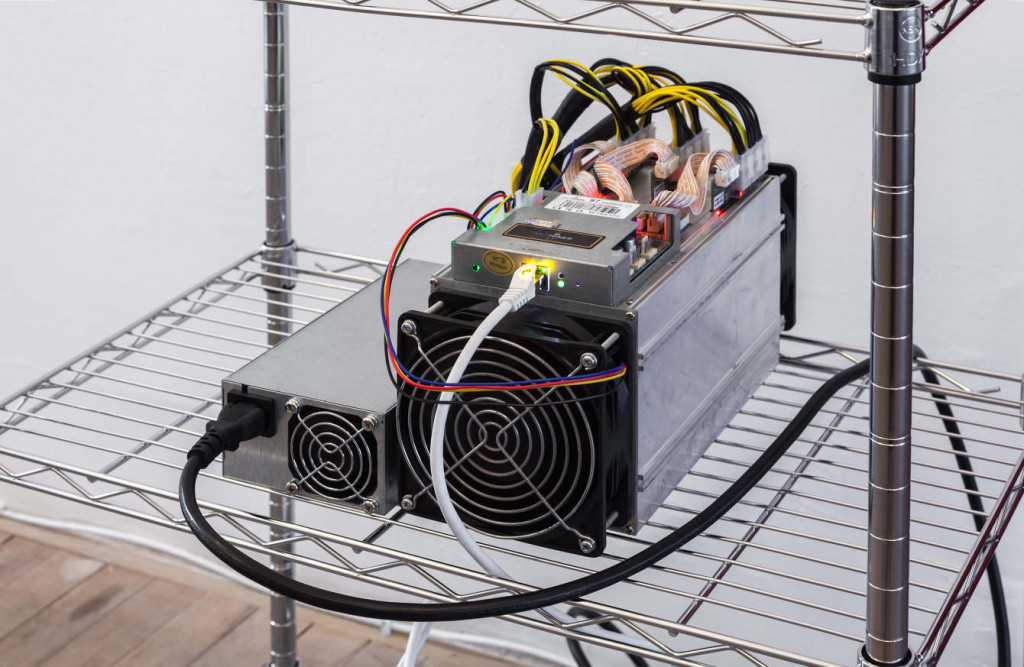
DEVIN KENNY When I learned about your work from Andrea Fraser, who was my mentor at UCLA, I was very excited about it, specifically GuiltCoin––it seemed to have similarities to my work What Would Upski Think?, a project I had shown at Artists Space and MoMA PS1. Anyone can download the Bail Bloc application and contribute their excess computing power to the cause. The wall text advertised this, and I also requested the curatorial staff install it on their computers for the run of the show, which they did.
COLEMAN COLLINS. I didn’t know about Bail Bloc when I created GuiltCoin, but I think there’s a lot of overlap. I like how you’re thinking about technology as a social process. Technology always incorporates these feedback loops, right? Even something as simple as a social media algorithm takes what you put in and feeds things back to you. There’s always an interplay between the user’s agency and the technology. I appreciate how you think about technology as a process with points where people can either intervene or try to evade it, as with the anti-surveillance work you’ve done in the past. I’m also interested in identifying places where there’s space for agency and decisions that can have larger effects.
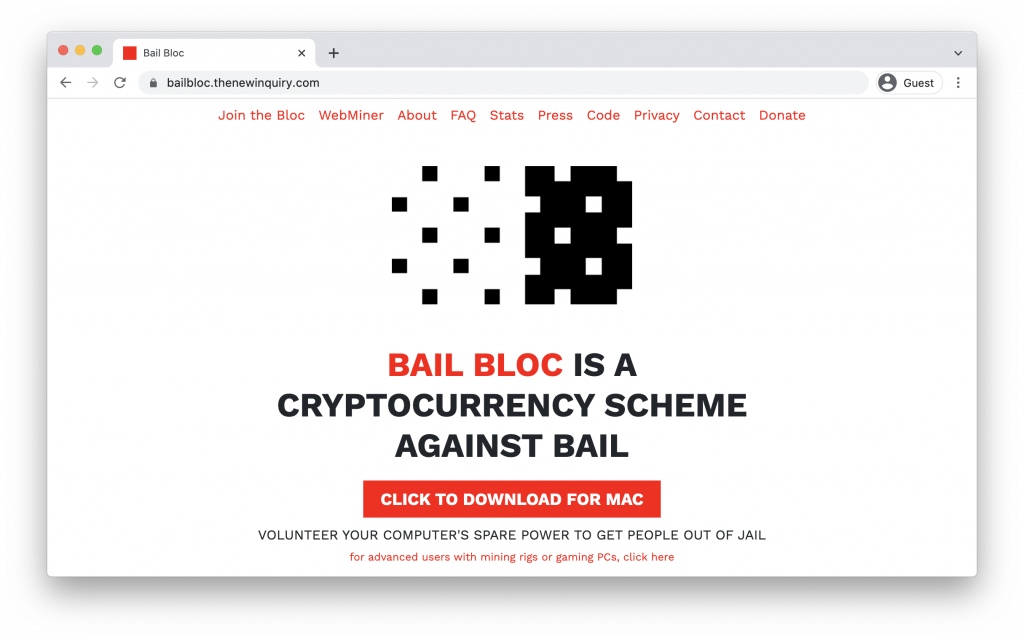
KENNY Technology changes culture, but it’s also a product of culture. I’m interested in exploring that feedback loop. That’s one lens through which I could look at GuiltCoin.
COLLINS GuiltCoin is a crypto token that relies on a conceptual leap. It’s a thought experiment: What if one could reduce guilt by purchasing this currency? I wanted to point to the relationship between guilt and debt, both historically and linguistically. The first iteration was at the Kunsthalle in Vienna, and––as pointed out by David Graeber––the German word Schuld means both “debt” and “guilt.” So money is always entangled with these relationships of obligation.
I wanted to crystallize that idea and think about the ways in which guilt and debt are embedded into so many parts of society. Sometimes when you purchase something you also want to make a donation to mitigate the effects of the thing you’ve bought, like carbon offsets. Or buying a cup of coffee means that Ethiopian schoolchildren get shoes, or whatever. There’s this underlying layer of guilt that many people experience when interacting with the larger economic system – in addition to the everyday guilt people feel because of their social circumstances.
So what would it look like if that guilt could be alleviated? Would it be a good thing? How are people dealing with guilt and how do they identify the role that guilt plays in their life? At the museum, visitors were invited into the gallery for a consultation about their guilt. It’s different from Bail Bloc because it’s more theoretical, more tongue-in-cheek. Bail Bloc has real material effects for people. So both projects have very different strategies, but I think they both address the extent to which one can take control over one’s circumstances and deal with this sense of powerlessness that many people feel given the overwhelming odds.
KENNY That makes me think about guilt, and gilding too. GuiltCoin is an ERC-20 token. Do you look at the network that you’re employing for the project as part of the material?
COLLINS As an armchair crypto observer, I see the Ethereum network as having long-term potential. Even though Bitcoin is obviously the current preferred store of value, I think that the Ethereum blockchain offers a diverse and varied approach that offers users the most possibility. The question of value and how it is created was really important when thinking about GuiltCoin, because everyone asks: What is it worth? The conceptual significance of working with cryptocurrency is that it provides a real challenge or our notions of value and longevity.
KENNY Keeping the token has its own kind of value, too
COLLINS On the other hand, most visitors thought guilt was valuable for its inhibitory effects; if you got rid of it, then you wouldn’t be able to live a moral life.
KENNY I’m thinking about guilt-free desserts. You know what I mean?
COLLINS Yes, absolutely. There’s a real link between consumption and guilt—this sense that one must consume all the time, but if you do too much, you should feel guilty about it.
You can see a different attempt at guilt-free consumption in the way companies are using social justice for branding purposes—like Twinkies ads supporting Black Lives Matter—there’s an increasing sense that the guilt has to be dealt with.
KENNY Like “rainbow washing,” with brands being pro-LGBTQ for one month of the year with the hopes that it will translate to more sales.
COLLINS Totally. There’s this vague gesturing at the social, but it’s framed as though the best way to change society is through individual consumption. GuiltCoin basically takes that logic to its ultimate conclusion. And I think the social aspects of GuiltCoin are really important. A work is never operating in a vacuum. The way an audience receives it can be informed by who else is in the room and how they’re engaging with it. The artwork provokes an encounter that can be experienced in different ways. That’s why GuiltCoin is really centered around consultations.
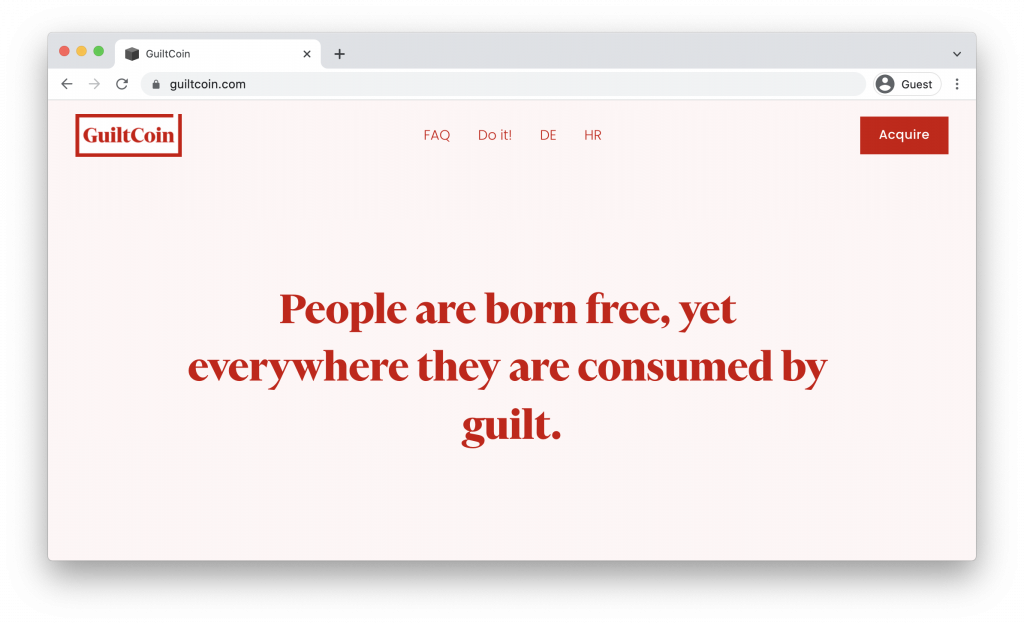
KENNY What Would Upski Think? refers to the author of No More Prisons, co-editor of How To Get Stupid White Men Out of Office, and author of Bomb the Suburbs, a book that’s is basically about graffiti. In one section, Upski proposes that writers should only do the “destructive” kind of graffiti—tags and things like that—in suburban areas, and use colorful wildstyle pieces in the city to beautify it. There’s a certain combination of altruism and white guilt happening in that proposal. Still, I do think that several of his notions are viable, and I’m alluding to that in the title of the work. Installing a miner puts a burden on the institution because the people there have to maintain it. It takes quite a lot of electricity. It makes a ton of noise and blows hot air. If the program crashes they have to get it running again.
The artwork is a proposal: anyone could see this work and then make their own at home. But if your goal is to eliminate the cash bail system or ameliorate those directly impacted, there are more efficient ways to do that.
COLLINS I’m not a complete techno optimist. I’m not convinced that cryptocurrency will liberate us from the state. I see GuiltCoin more as offering a space for reflection. In that sense it was really important for the encounter with the public not to be accusatory. In Austria, for example, the national discourse around guilt is mostly concerned with complicity in the Holocaust. In an American context, white guilt and reparations come up a lot.Those associations are unavoidable, but I wanted to allow for the possibility that everyone could enter the work. The work would have been different if it was specifically about white guilt.
As far as I can tell we’re both Black, and that’s always part of the work, whether it’s explicit or not. A disproportionate number of Black men are incarcerated, so any project about bail is obviously going to have that at its core.
But I believe there are ways to address the question of guilt without the assumption that only white people can feel guilty. Sometimes, being confrontational about whiteness can weirdly reinscribe a centering of whiteness. I want to maintain a sense that I am an agent, that I am implicating myself—that I’m not exempt from critique.
Do you expect people to come into your work differently, depending on the makeup of the audience?
KENNY It changes from piece to piece, but with What Would Upski Think? I was operating under the idea that this work could be a launchpad for conversation that would could lead to action. The most immediate mode of interaction is l looking at the physical object as a thing in space. Then the second mode is interacting with the Bail Bloc application. Beyond that are other ways of questioning and trying to change the status quo. So it’s the thing that leads to the thing that leads to the thing. Sometimes that happens through humor, sometimes that happens through schadenfreude. It happens through a variety of emotional registers.
COLLINS I really like the idea that artworks can provoke a conversation that can then lead to something else. Even if you reject the idea, you still have to think about the proposition, and articulate your opposition to it. It requires a bit of reflection..
KENNY What would happen in a GuiltCoin consultation?

COLLINS It’s kind of a cross between a therapist and the Genius Bar, with the consultant being very empathetic, as well as super helpful and knowledgeable about the specs of the coin.The consultant subtly tries to shift the person toward identifying sources of guilt in their life, and talking about what their relationship with guilt is. Some people are really interested in talking about guilt in theoretical terms, while others would come in and say: “I’m really guilty about my relationship with my mother.” Vienna has become home to quite a few refugees in the last five or six years, and in the museum we had a few people who expressed guilt about having been able to escape Syria or Afghanistan. At the same time you had Germans and Austrians who thought guilt was an important part of their national identities, and an irreplaceable tool to keep fascism at bay.
I worked with a number of different performers and they all developed their own personas as consultants. There was a basic framework with a couple of points we wanted to get to: to think about value, to think about our relationship to guilt, and what it would look like to feel less guilty, whether that would be a good thing or not. At the end comes the soft pitch for the coin. But the way that we get there is dependent on the individual, and where they locate their own responsibility within the social structure and the opportunity they have to change things.
With GuiltCoin, you couldn’t purchase a coin in the gallery. You had to go home and do it on your own. It’s a personal decision, and no one should be looking over your shoulder.
Still it’s something that happens on a public ledger. The blockchain is always public, collective, and anonymous. Bail Bloc seems to operate in a parallel way: any person seeing your work has to make a decision about whether or not to participate. They can look online and see that other people have decided to act, that it’s a collective undertaking. So it’s social, but it’s anonymous.
It’s like those anti surveillance devices you showed at PS1 a while back. I’m thinking of Ain’t nobody seein’ me (IR mask) and Do You Even Talk To Your Neighbors? in particular. On the one hand I identify a sort of agency being enacted, the possibility of creating new systems and new worlds. But on the other hand there’s this other drive toward escape, and fugitivity, and flying under the radar. I wonder whether you think that’s a fair characterization, and how you think those two strands operate in tandem.
KENNY There are two visual languages in the work, and in this case, there’s the visual language which is not really looked at, and then there’s the visual language of the world where everything is looked at. A mining rig is designed in a particular way for efficiency. With the old Bitmain ones, it’s not about how the lights flash, or the color of the LEDs. But when you put it into an art space, then it’s different—it becomes a weird kind of sculpture. We can relate back to Hans Haacke’s Condensation Cube and other artworks that can be conceived differently in different contexts. I’m interested in spaces where that happens partially because it allows me to reflect on the multitudes within myself––I presume that they’re also in everyone else but they manifest differently.
COLLINS When I look at your work, I see objects that refer to external entities. Sometimes that’s connected to the material utility of the thing itself—a BBQ grill, for example. Then there are these indexical relationships towards localities and larger forces: like works or about a specific place in Houston, or a specific system of surveillance, or a specific electromagnetic process, or a specific type of camera that one can evade.
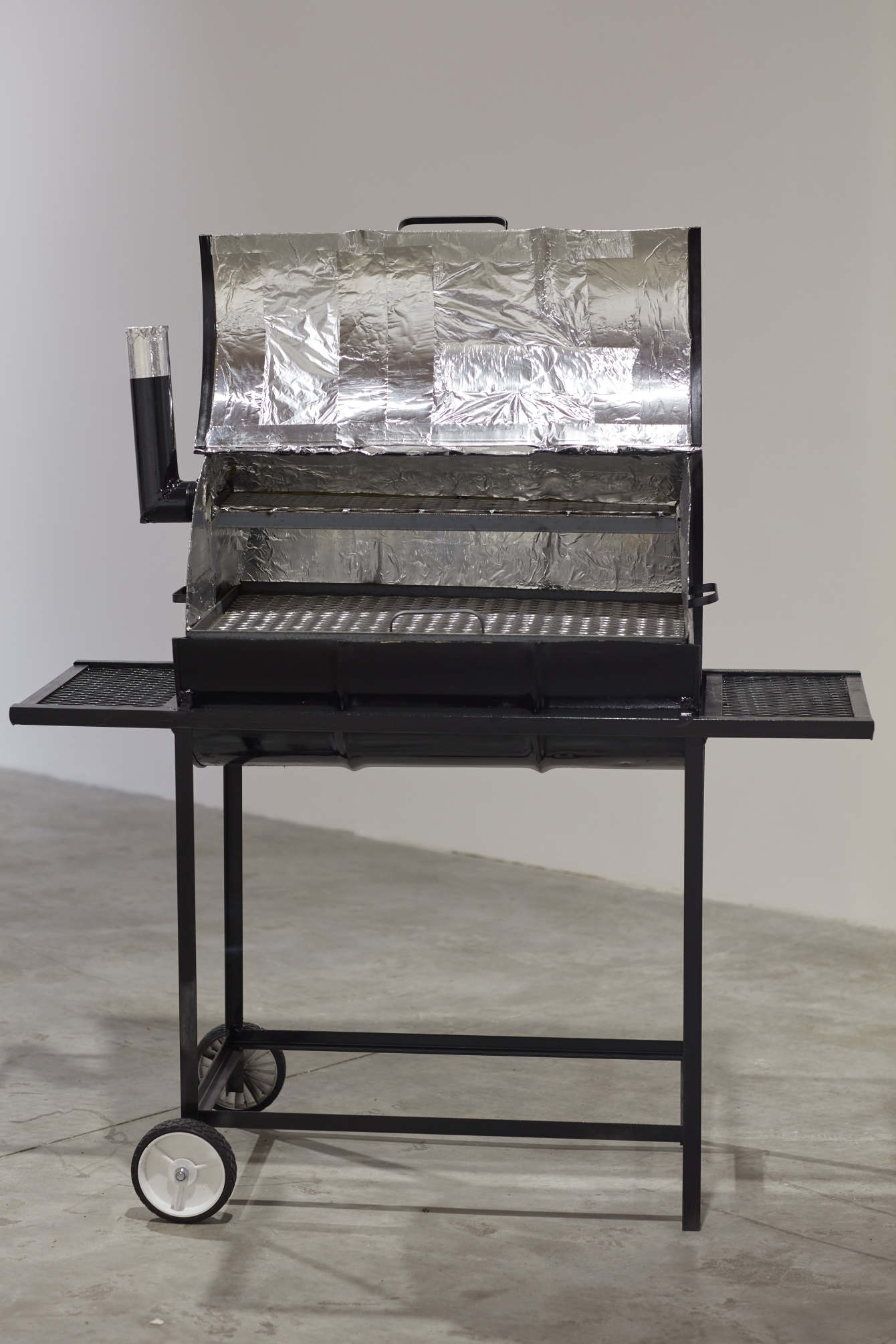
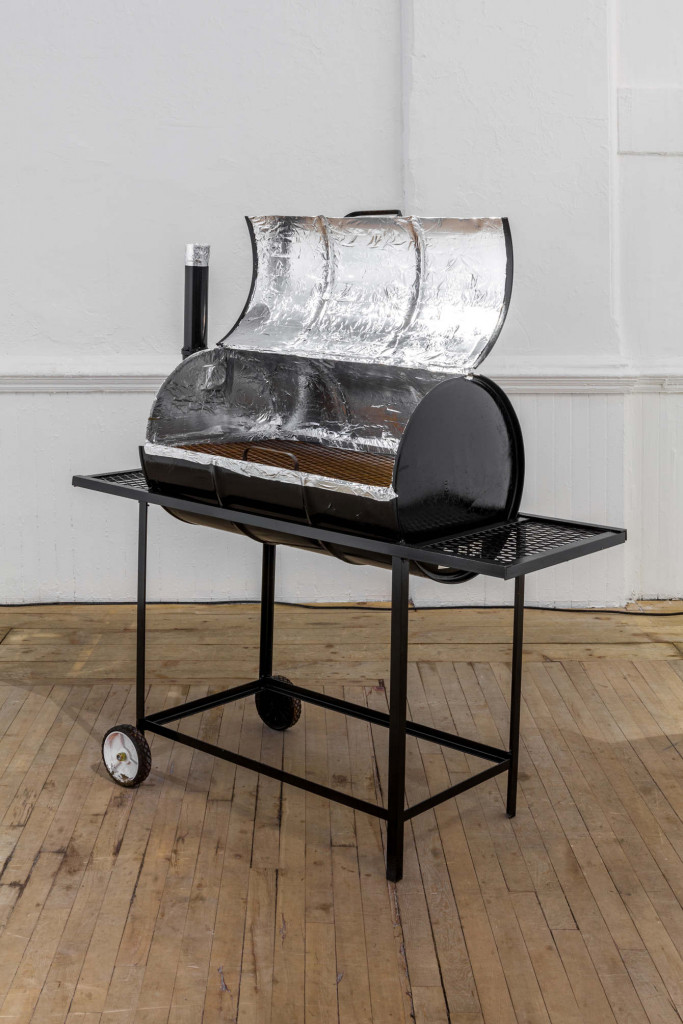
KENNY Even like on the flip side of that piece you’re referring to, there’s also the grill, which facilitates a social gathering in places that are highly surveilled.
COLLINS And it’s made out of oil drums, which index a larger system of resource exploitation and commerce. I understand what you’re saying about visual language, but I’m also identifying a conceptual index of references and systems.
KENNY I see that happening in works of yours as well. You’re creating a financial instrument as a part of a larger art experience. The work is not the token. The work is the token, and the text, and the interactions, and the institutions. What does it mean for you to produce these things that typically are not seen as within the purview of art? It’s not a physical commodity, and it’s not a temporal commodity, either.
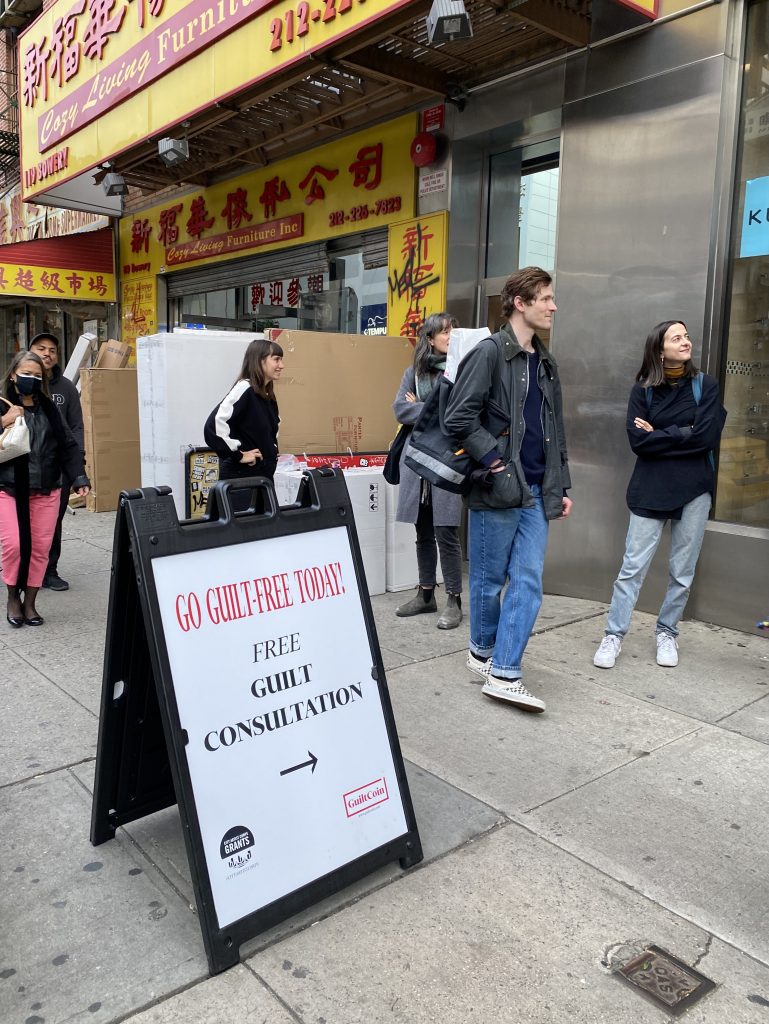
COLLINS I think the opportunity to create an institution allowed me to think about things structurally. I’m always thinking about what my relationship is to the institutions that I’m participating in and how I, and all the other people within them, are creating this thing. With GuiltCoin, it wasn’t just me. I worked with a lot of performers. I recently restaged this performance in New York, outside of the museum, and I realized that I had taken for granted just how big the “museum effect” is. The museum was doing so much work for me to legitimize the project and set the terms of the encounter. I was aware of this intellectually, but didn’t quite know how deep the connection was. If it’s in a museum people know already that it must be art because the museum says so. It must have some kind of value.
KENNY It’s not just a pop-up shop.
COLLINS In New York, we put a sign out for guilt consultations and people were very skeptical. In a museum there’s always a willing suspension of disbelief. In addition to the museum’s authority, there are the habits and expectations of the contemporary art audience. Maybe it wouldn’t have been like this fifty or sixty years ago, but since the notion of performance art is more widespread now, people are ready for whatever. In the New York iteration people weren’t immediately aware that the artwork was an artwork and not some weird Bitcoin scam.
So until I tried to do it outside of the museum, I didn’t realize just how much the art context affected the way people perceived it. I had to confront the way the institutional context affected and informed the work’s reception. As much as I kind of implicitly believe in my own autonomy and the strength of my own ideas, the work is not something that people just take it on its terms. It is always supported and reinforced by institutions.
KENNY In the same way, NFT work is somehow seen as liberatory in the sense that it’s no longer bound to the restraints of the gallery or museum. But the people and platforms hosting NFTs emulate those structures—OpenSea acts differently than Foundation, etc.
COLLINS Absolutely. As I was saying about your work, I never want to lose sight of the fact that we are always existing within institutions, and there are things that require feedback, choices, and decisions. I think there’s always this fantasy—whether you identify it as libertarian or anarchist—that the one thing we need to do is get away from these institutions, that if we get as far away as possible we can have a blank slate, the perfect opportunity to create the institution that we’ve all been waiting for. Except we won’t call it an institution. We’ll call it something else.
—Moderated by Lauren Studebaker
